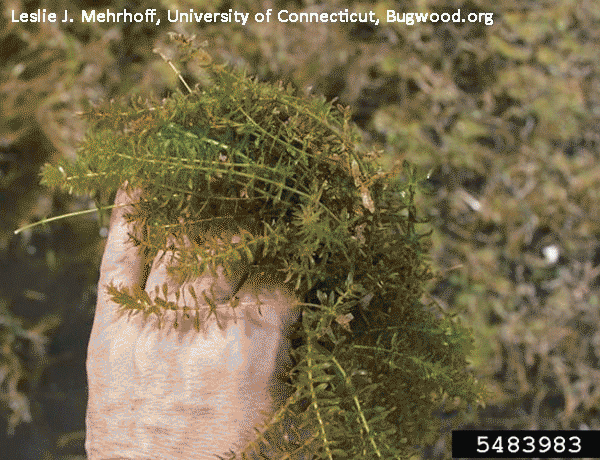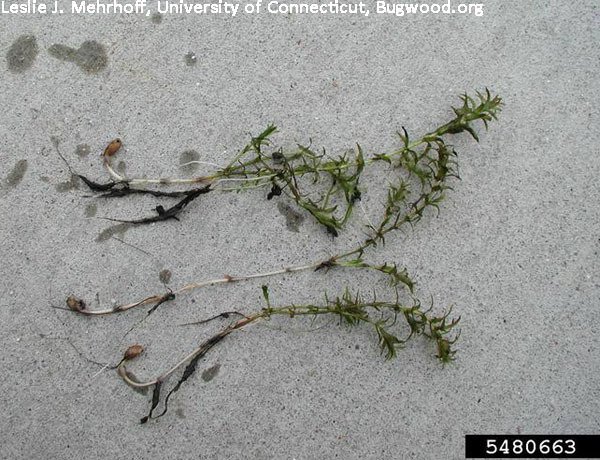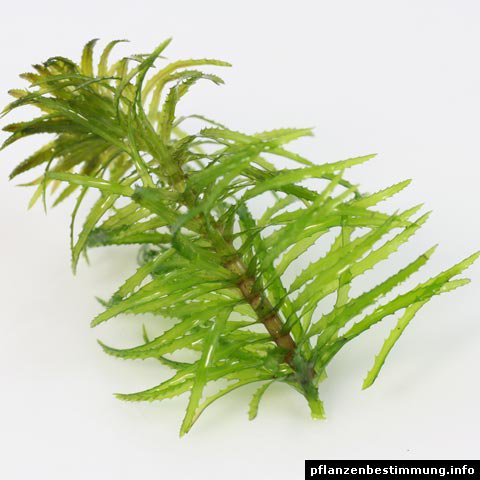Hydrilla
Hydrilla verticillata



Hydrilla- Very similar in appearance to our native elodea (Elodea canadensis) and to Class B noxious weed Brazilian elodea (Egeria densa), this aquatic perennial is especially problematic in waterways and attempts to mechanically control will often perpetuate its spread.
Hydrilla vs Native Elodea fact sheet from the New Jersey Water Supply Authority
Leaves: Whorled formation of 3-10 (but most often 5) leaves with sharply toothed margins. There are often spines along the reddish midrib giving the plant a "velcro" feeling when pulled.
Flowers: Transparent to white, female flowers with petals of 3 are attached to the stem tip by a slender stalk. Male flowers are produced in the leaf axils before detaching to become free floating. Blooms mid to late summer.
Habitat: Hydrilla grows rooted to the bottom of lakes, ponds, springs, ditches, marshes, wet ricefields, slow streams, and tidal waters, where it is submersed in either still or flowing water
Classification: A
Not known to be present in Lewis County
Control Recommendations:
WA State Noxious Weed Board
UC Davis Weed Report
